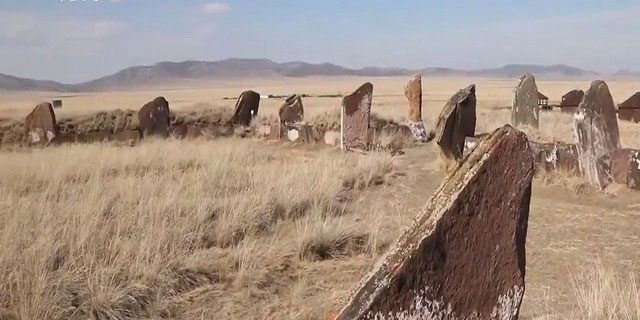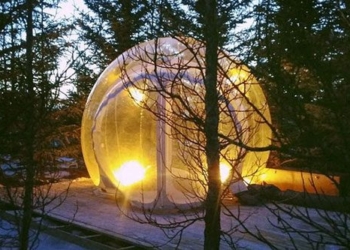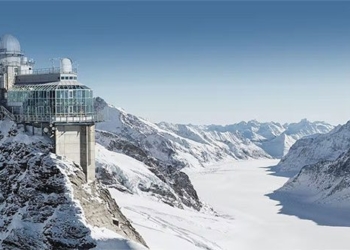About 70 km from the capital of the Republic of Khakassia, Abakan, lies one of the most mysterious sites in Siberia – “The Valley of the Kings” on the Salbyk Steppe.
Situated in the vast steppe of the Republic of Khakassia in southern Siberia, Russia, this location attracts not only tourists but also many archaeologists and historians – the ancient burial mounds on the Salbyk Steppe. These ancient stone formations, thousands of years old, are often compared to the famous megalithic site of Stonehenge in the United Kingdom. Throughout various historical changes, this area has preserved traces of an ancient culture in Siberia.
The stone formations in “The Valley of the Kings” on the Salbyk Steppe have existed for thousands of years and are remnants of one of the ancient burial mounds – the Salbuk Mound, constructed around the 5th to 4th century BC. Here, within a vast territory of nearly 10,000 hectares, there are 58 burial mounds surrounded by gigantic stone blocks, the tallest being a 12-meter slab weighing at least 70 tons.

This is a remnant of one of the ancient burial mounds – the Salbuk Mound
According to archaeologists, this site reflects the mark of nomadic tribes belonging to the ancient Tagar culture, and to this day, the technology used to move and arrange these stones remains a mystery.
Vasily Borgoyakov, the Director of the “Ancient Burial Mounds on the Salbyk Steppe” complex, stated that this site was first recorded in Khakassian literature in the 18th century, but archaeological excavations only began in the 1950s.
Mr. Vasily Borgoyakov – Director of the Complex of “Ancient Burial Mounds on the Salbyk Steppe”, Republic of Khakassia, Russia: “At the time of excavation, the burial mound was 11 meters high, with a length and width of 70 meters. There were 23 upright stones, all aligned towards the path of light – from East to West. It is estimated that the Tagar people transported 24,000 cubic meters of special soil here, consisting of about 50% sand and 50% clay – a solid type of earth when wet, creating a pyramid.”

The remnants today show a square enclosure with ancient stone slabs.
From archaeological evidence, the burial mounds originally stood at 30 meters high and served as burial sites for the powerful leaders of the tribes. The remnants today show a square enclosure with ancient stone slabs, averaging 5-6 meters in height and weighing 40-50 tons. Surprisingly, the quarries that people from 2,500 years ago used are located several dozen kilometers away from the construction site.
“The Devonian sandstone – ancient red sandstone was sourced from the banks of the Esenin River, located 65 km away in a straight line. The horizontal stones were brought from 25 km away from the Khuzyl Khaya cliffs. The Tagar had stone extraction specialists; somehow, they drilled, chiseled, and secured them with wooden wedges,” Mr. Vasily Borgoyakov explained.

The burial mound originally stood at 30 meters high, serving as a resting place for powerful tribal leaders.
Time, wars, and looting – The remnants in “The Valley of the Kings“ still testify to the powerful existence amidst the steppe, serving as a source of pride for Siberians.
In the 3rd century BC, the nomadic horsemen of the Huns traversed Central Asia, dominating the vast southern steppes of Russia. The unique Tagar culture was buried, and many legends about the ancient burial mounds remain. The journeys back in time, seeking answers to historical questions, have never ceased.





















































